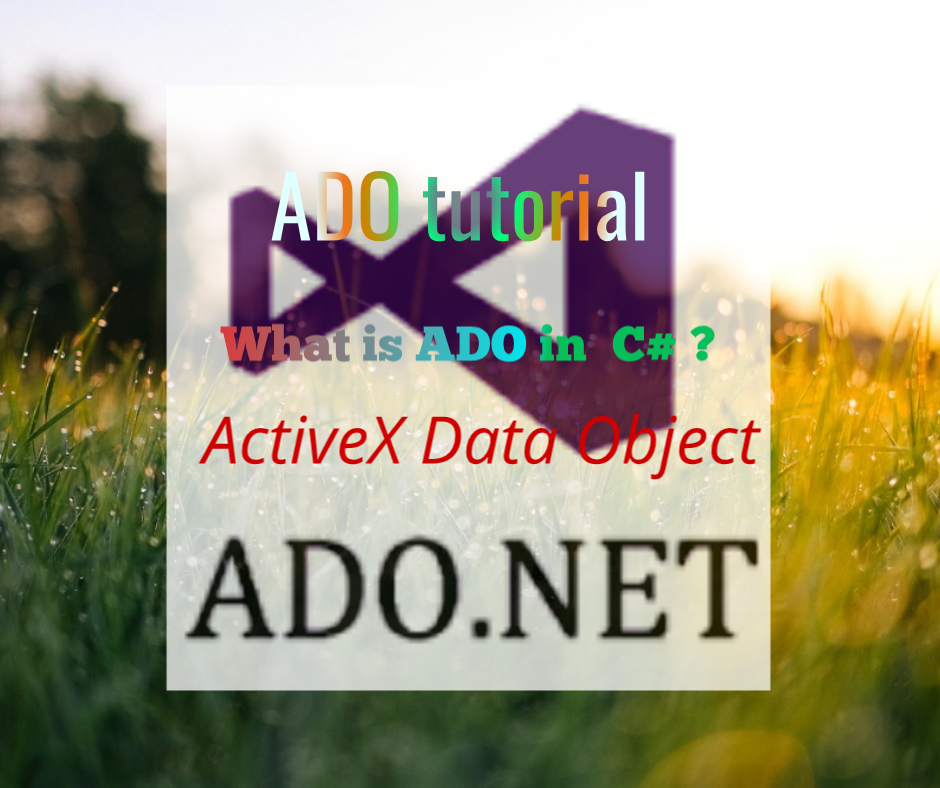ADO Introduction
Pretty much every application deals with data in some manner, whether that data comes from memory, databases, XML files, text files, or something else. The location where we store the data can be called as a Data Source or Data Store where a Data Source can be a file, database, or indexing server etc.
Programming Languages cannot communicate with Data Sources directly because each Data Source adopts a different Protocol (set of rules) for communication, so to overcome this problem long back Microsoft has introduced intermediate technologies like JET, Odbc and Oledb which works like bridge between the Applications and Data Sources to communicate with each other.
The Microsoft Jet Database Engine is a database engine on which several Microsoft products have been built. A database engine is the underlying component of a database, a collection of information stored on a computer in a systematic way. The first version of Jet was developed in 1992, consisting of three modules which could be used to manipulate a database. JET stands for Joint Engine Technology, sometimes being referred to as Microsoft JET Engine or simply Jet. Microsoft Access and Excel uses Jet as their underlying database engine. Over the years, Jet has become almost synonymous with Microsoft Access, to the extent where many people refer to a Jet database as an “Access database”. MS developed Jet database system, a C-based interface allowing applications to access that data, and a selection of driver DLLs that allowed the same C interface to redirect input and output to databases. However, Jet did not use SQL; the interface was in C and consisted of data structures and function calls.
ODBC (Open Database Connectivity)
ODBC (Open Database Connectivity) is a standard C programming language middle ware API for accessing database management systems (DBMS). ODBC accomplishes DBMS independence by using an ODBC driver as a translation layer between the application and the DBMS. The application uses ODBC functions through an ODBC driver manager with which it is linked, and the driver passes the query to the DBMS. An ODBC driver will be providing a standard set of functions for the application to use, and implementing DBMS-specific functionality. An application that can use ODBC is referred to as “ODBC-compliant”. Any ODBC-compliant application can access any DBMS for which a driver is installed. Drivers exist for all major DBMSs as well as for many other data sources like Microsoft Excel, and even for text or CSV files. ODBC was originally developed by Microsoft during the early 1990s.
OLE DB (Object Linking and Embedding, Database)
OLE DB (Object Linking and Embedding, Database, sometimes written as OLEDB or OLE-DB), an API designed by Microsoft, allows accessing data from a variety of sources in a uniform manner. The API provides a set of interfaces implemented using the Component Object Model (COM). Microsoft originally intended OLE DB as a higher-level replacement for, and successor to, ODBC, extending its feature set to support a wider variety of non-relational databases, such as object databases and spreadsheets that do not necessarily implement SQL. OLE DB is conceptually divided into consumers and providers. The consumers are the applications that need access to the data, and the providers are the software components that implement the interface and thereby provide the data to the consumer. An OLE DB provider is a software component enabling an OLE DB consumer to interact with a data source. OLE DB providers are alike to ODBC drivers or JDBC drivers for Java. OLE DB providers can be created to access such simple data stores as a text file and spreadsheet, through to such complex databases as Oracle, Microsoft SQL Server, and many others. It can also provide access to hierarchical data stores.


